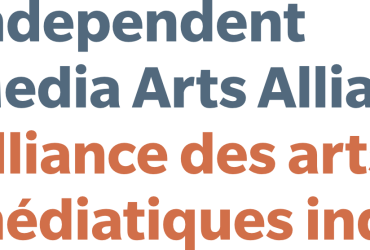
Spoken Sound
By Janet Rogers
January 2018
Territ-Aur(i)al Imprints Collaborative Exchange
Palomino/Arawak territory in La Guajira, Colombia.
This article is part of Perspectives: a series of online reflections from the Canadian media arts community, created with the support of the Canada Council for the Arts.
In 2016-2017, IMAA presented a series of two-day gatherings within the Canadian media arts sector, focusing respectively on Sound Art, Analogue Film, and Digital Strategy. Each gathering took place in a different Canadian city, exchanging views and strengthening ties within these far-reaching communities, while also offering an important space for focused conversations on pressing issues faced by each sector. With the idea to continue the discussions in a public format, IMAA has commissioned written reflections from several authors on a subject of their choosing with relevance to the discussions.
This reflection by Janet Rogers is in response to the Sound Art Gathering that took place 10-11 November 2016 in Toronto, ON and an artist exchange residency Rogers attended at Alejandro Valbuena’s experimental art centre in Palomino, Colombia.
Photo Credit: Alejandro Valbuena, Tyrona National Park
Spoken Sound
We have champions of sound art practices. Those who go beyond reiteration in conversation and validation of the practice to applying and providing opportunities for artists to conceive, develop and share. One such opportunity was provided by the teams at the imagineNATIVE Film and Media Arts Festival and Alejandro Valbuena’s experimental art centre in Palomino, Colombia during an artists’ exchange in May and June of 2017. Two artists from occupied Canada, one artist from Mexico, one artist from Chile and our host Alejandro came together in the concentrated heat and exotic beauty of South America for a three-week collaboration of sound skills and practices.
When making the ten-minute walk from our artists compound to the small town of Palomino, the calm stroll immediately turns chaotic the second you enter the main drag. Local watering holes compete for business with blaring music from shitty speakers. Dogs constantly bark, heavy transport trucks fly by dangerously fast-kicking up dust and raising sound levels. This is not noise pollution, this is culture. Sound is part of what defines culture. We produce sound art with what is available to us, both in our surroundings and available technologies. And both facets reflect us, our values, our identities, through our interpretative language with sound. So it goes to say that when in foreign territories you hear foreign sounds too. Sounds that stop you in your tracks forcing you to call upon every memory file to place it. Passing a small field beside the dirt road I heard a chorus of popping sounds, like hundreds of champagne bottles being de-corked in succession. I am told these are frogs, burrowed in the cool floor of the brush-covered field, out of sight yet oh so vocal.
And although we are encouraged to discuss and debate our art making with sound(s), I respect art and artefact that keeps its secrets. For example, petroglyphs and pictographs from various regions of the world have had their meanings, purposes and messages anthropologized to death. It’s a shame when art has the art dissected out of it, leaving the carcasses lying lifeless in front of us. So to be clear, our collaboration and this article does not intend to kill the wordless medium with words but to inspire exploration and curiosity.
The residency location is where I am writing this article from during the last of our three-week residency. The territory is full of sound and colour. Secluded studios do not exist here. There are no walls to contain the sound–it is boundless and everywhere–from the tiny green-yellow birds that chip and chirp around the clock, to the bullfrogs singing volatile and proud songs, to the constant motor bikes–scooter-like vehicles that pass outside our compound from sun up to past sundown. And those are just the surrounding soundtracks. We have been guided into many community areas, national parks, Colombian reserves and hiking trails. With zoom recorder in hands, we venture forth to respectfully harvest the full and varied landscape voices of these territories. And what a treat it is.
Of Arawak descent, Alejandro describes sound in emotional terms. He describes his relationship to sound as visceral, and having the ability to evoke childhood memories where he is transported immediately through certain sounds. When he hears the crashing of ocean waves, which is constant in his territory, memories of his childhood-self walking along the beach with his grandfather flood his mind. Sounds crowd his mind, he says. And the emotion of sound is carried, never stronger than through voice. “The sound of voice,” Alejandro says, “is powerful and conveys the human condition effectively and efficiently as no other sound can. It is a gunshot to the heart, you can’t move. Voice is the Snake Charmer. It is high art. The human voice is so powerful.”
Casey Koyczan, a Yellowknife-based Cree/Dene musician and Territ-Aur(i)al Imprints sound media participant, works in audio assemblage with 2-D work and audio installations. He engages with sound as a way to enhance and help disseminate his visual work. Casey thinks about sound as early communication. Through sound, before language, people were able to communicate, crying or yelling or sighing. These sounds trigger emotion. To use sound in exhibition work, Casey considers sound as a way to communicate emotion. For his graduate exhibition, titled Mode of Ascension, Casey suspended a hollowed out log with speakers built inside in the middle of the gallery. Without telling me too much of what specific sounds emanated from the log, he reports that audience reactions ranged from euphoria to tears. Casey knows the effects of sound wave forms on our DNA and believes in sound therapy as a way to reassemble the molecules within us.
Personally, my relationship to sound is similar to that of my relationship to radio. We are both transmitter and receiver. We tune in to sounds that inform us, entertain us and that reflect us. I found new ways to work with the new sounds I found in Colombia. I learned that human voices are parallel to nature voices and the blending of those voices creates interesting conversations, producing new languages, without words as we know them. Spoken word? No. Spoken sound.
BIO
Janet Marie Rogers is a Mohawk/Tuscarora writer from Six Nations. She was born in Vancouver British Columbia, lived in Stoney Creek, Hamilton and Toronto Ontario and is living as a guest on the traditional lands of the Coast Salish people (Victoria, British Columbia) since 1994. Janet works in the genres of poetry, spoken word performance poetry, video poetry and recorded poetry with music. Janet is also a radio broadcaster, documentary producer, media and sound artist.
Articles
Newsletter April | Infolettre avril 2024
This month’s news at a glance –» Click here! IMAA NEWS✦ Open Letter re: Cuts...
Read moreOpen Letter re: cuts at Canadian Heritage
As a member of the Canadian Arts Coalition (CAC) IMAA has signed onto an Open Letter to...
Read moreThe interConnect resources are online!
During the summer and fall of 2023, interConnect brought together artists, arts professionals, and organizations...
Read more



